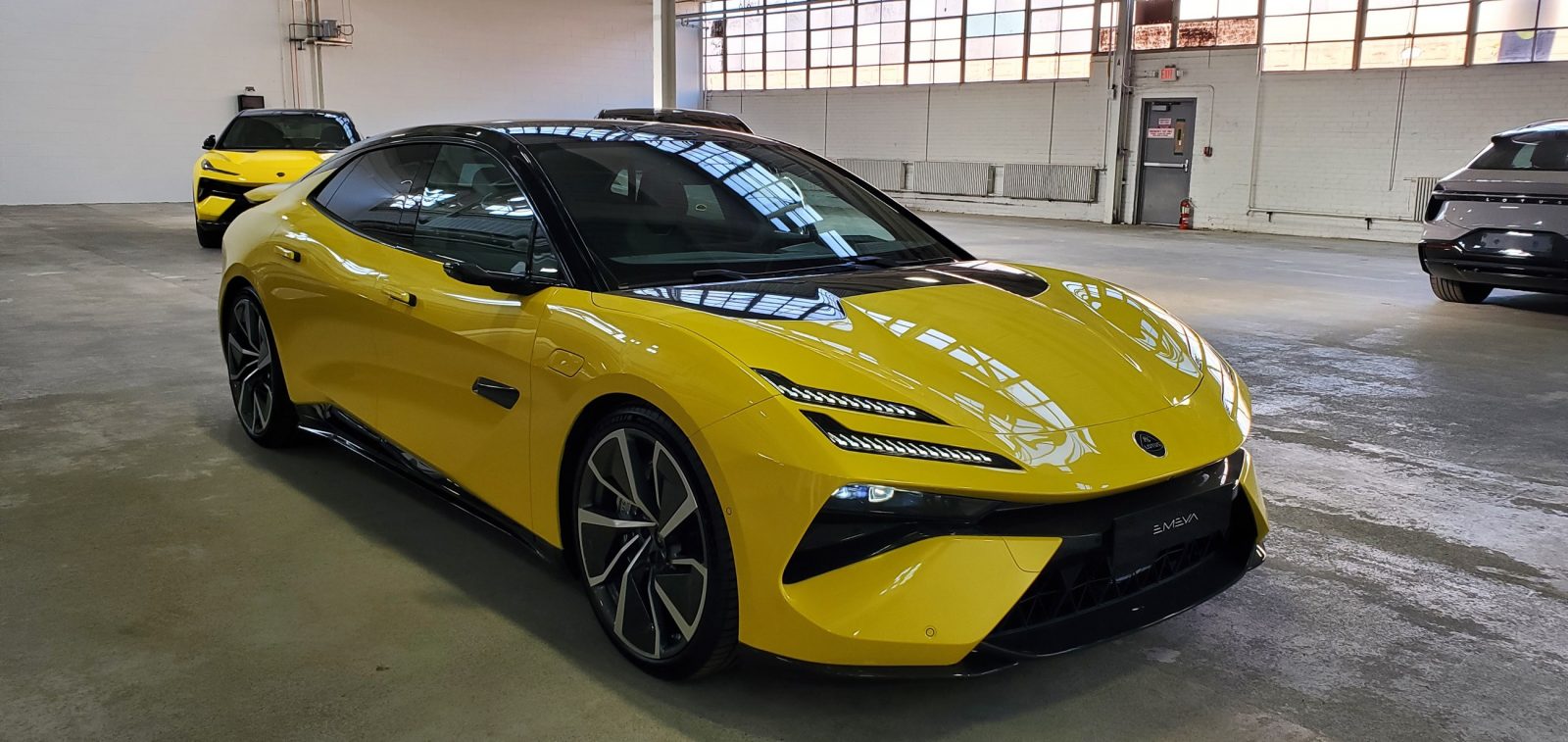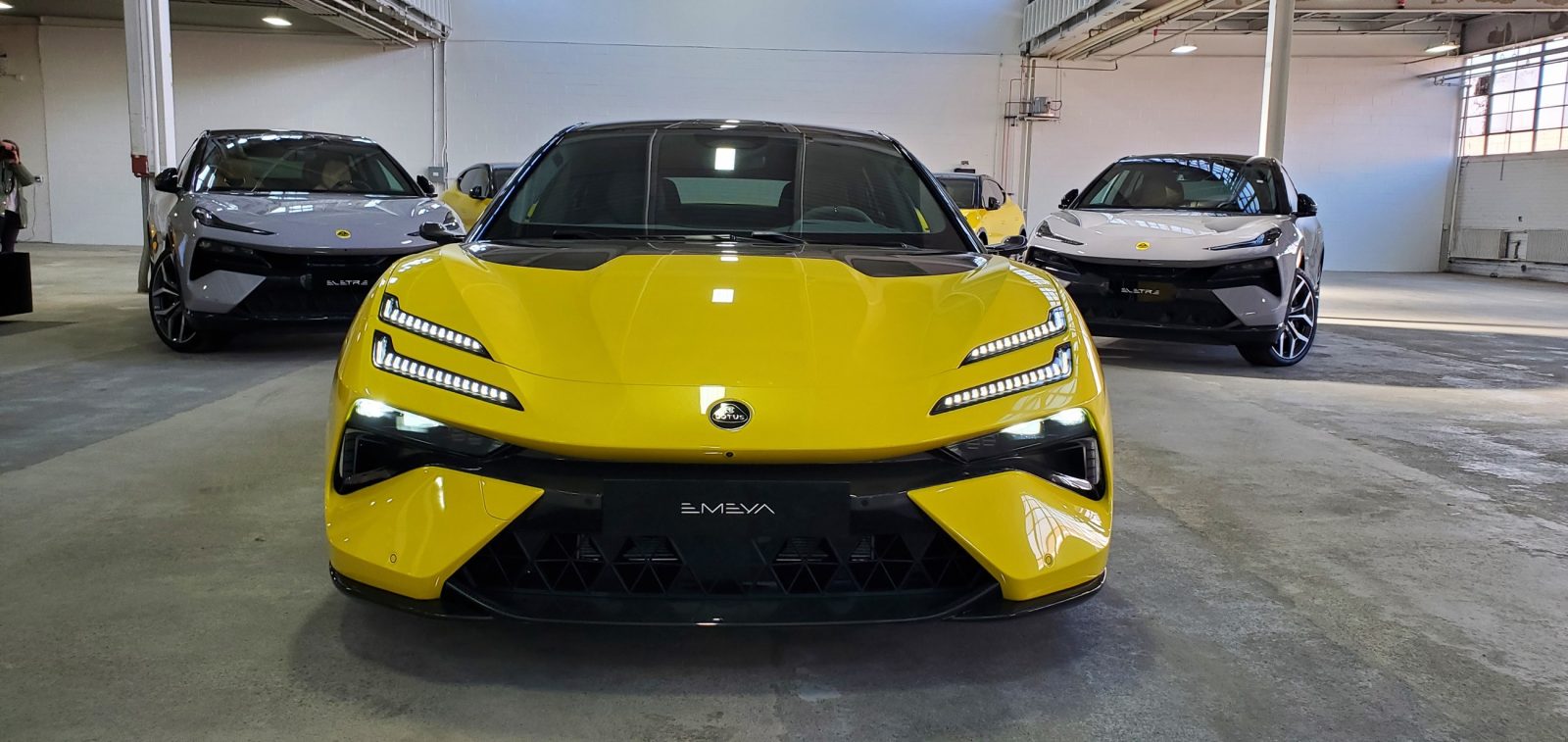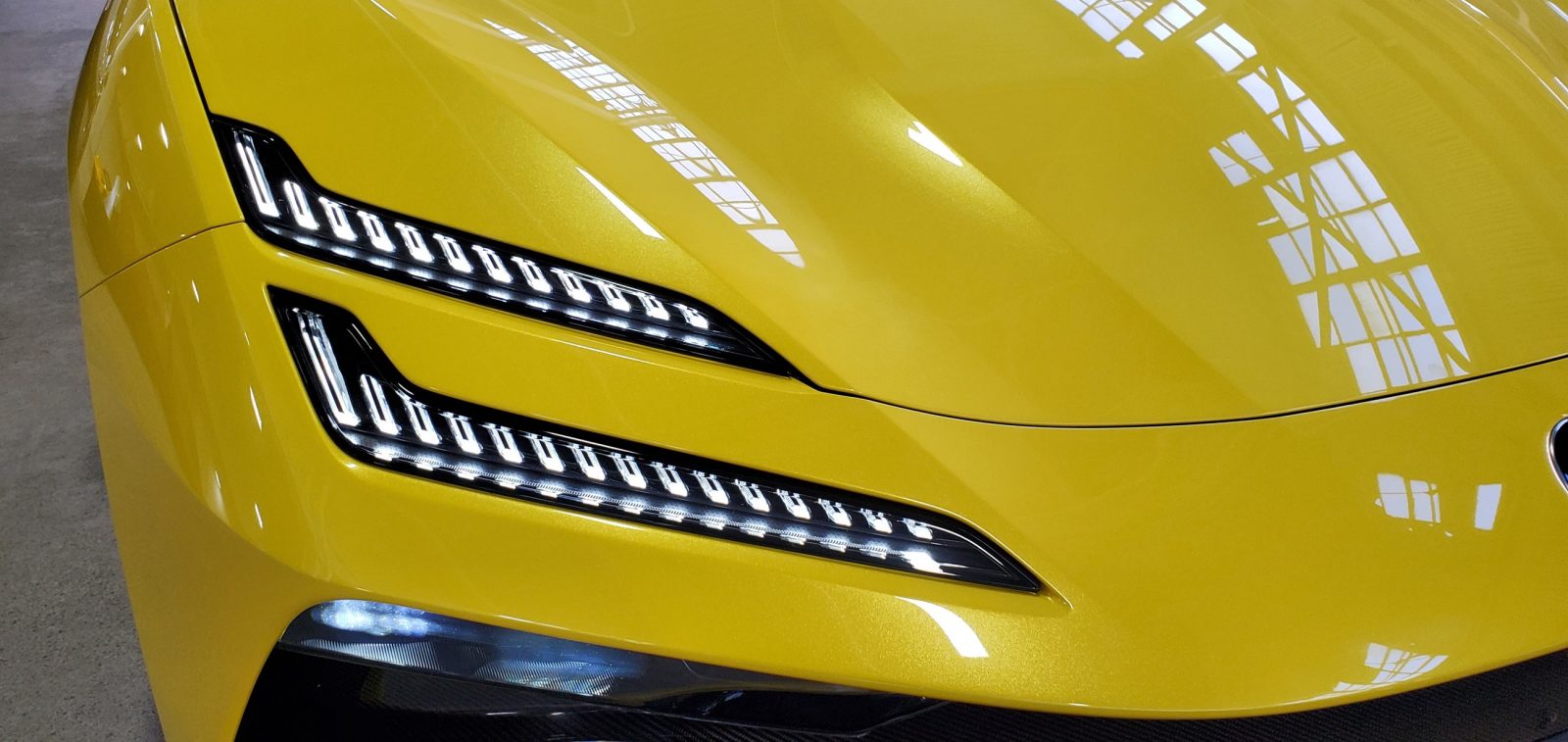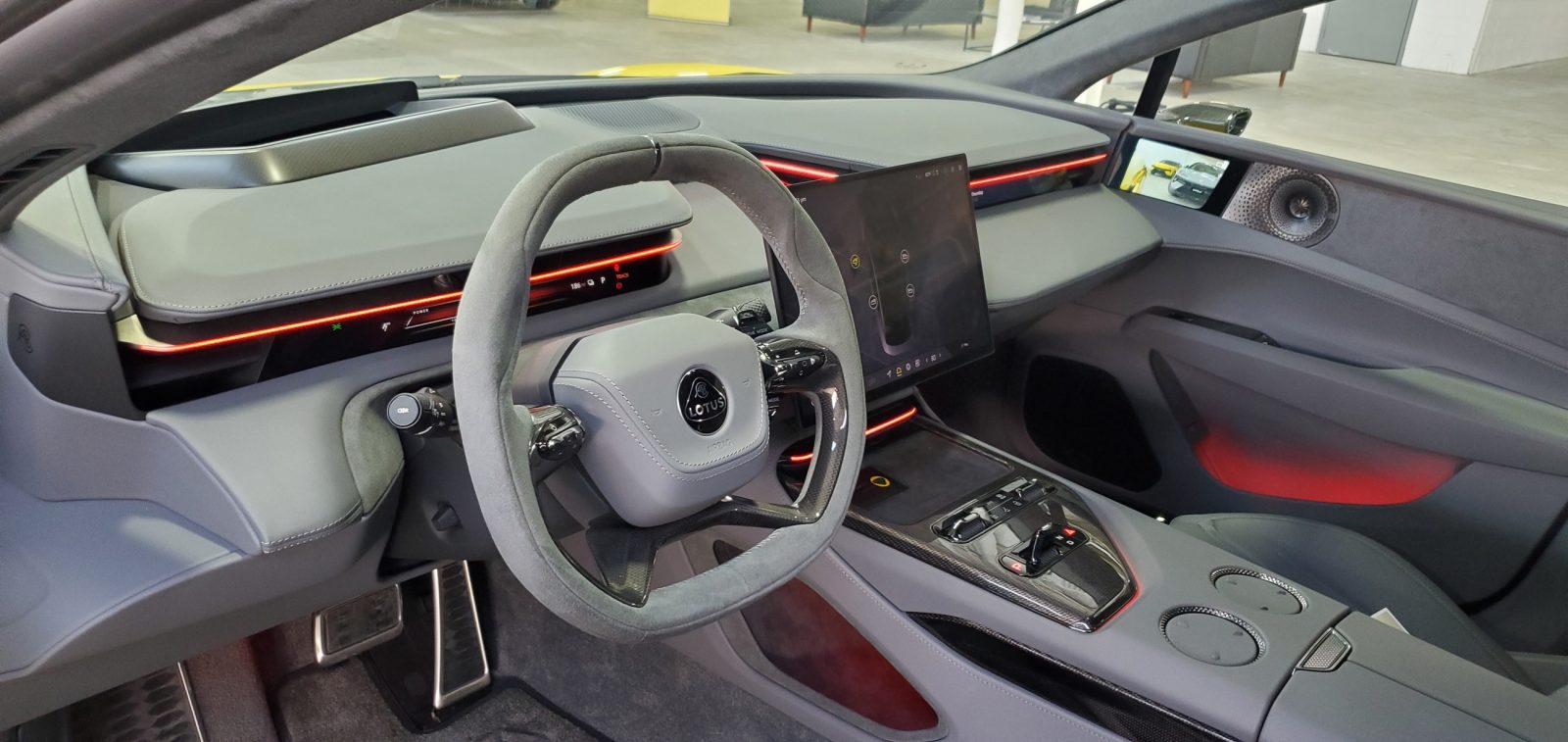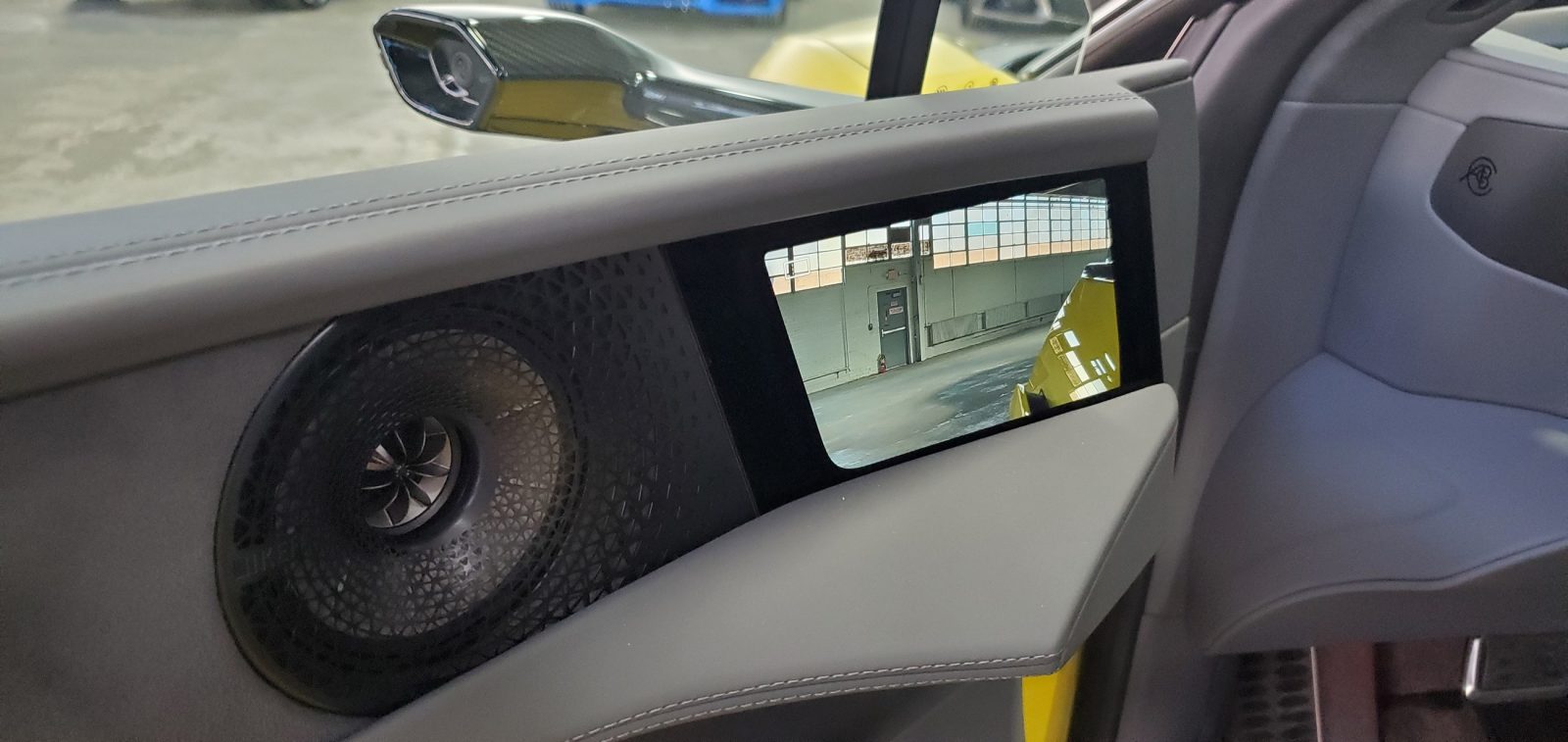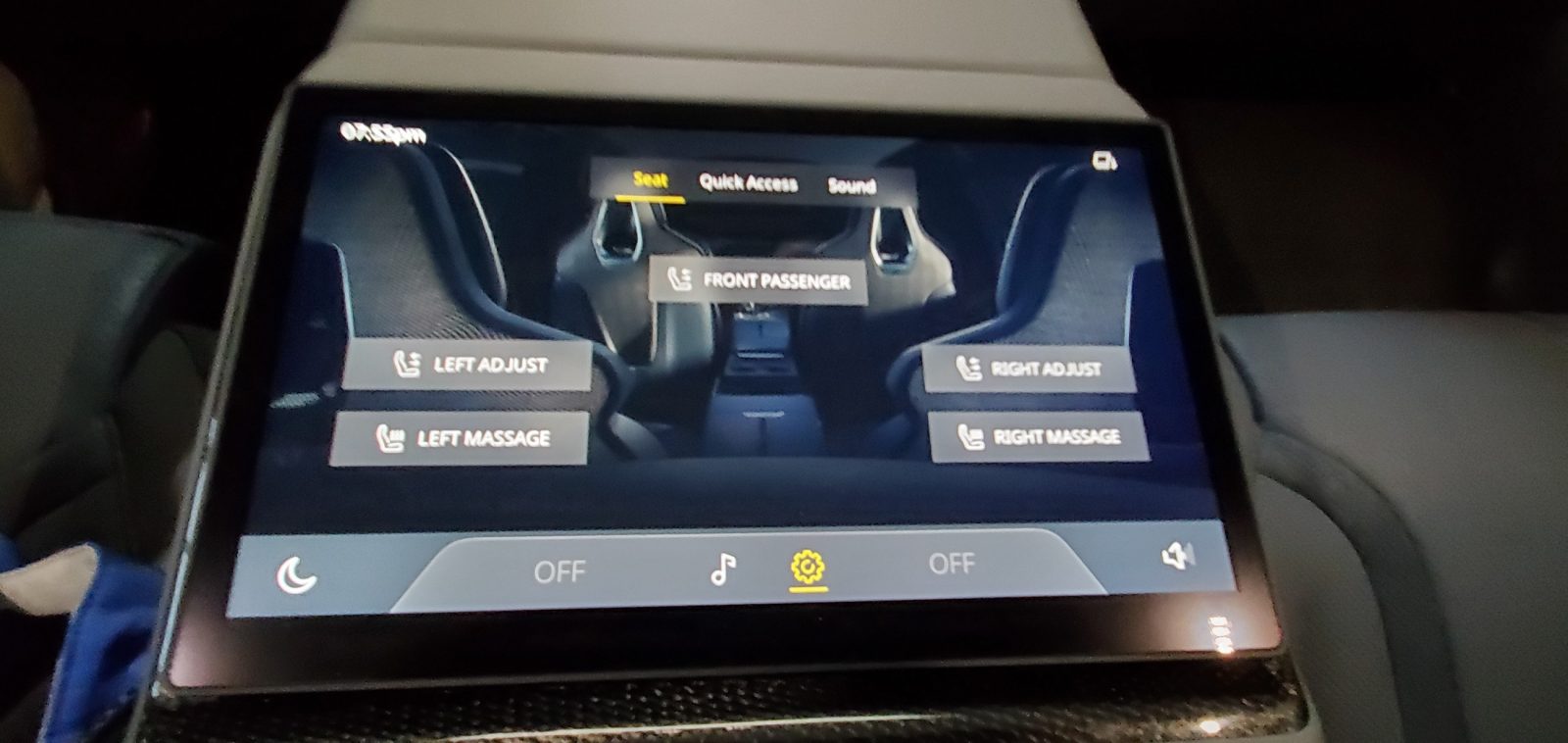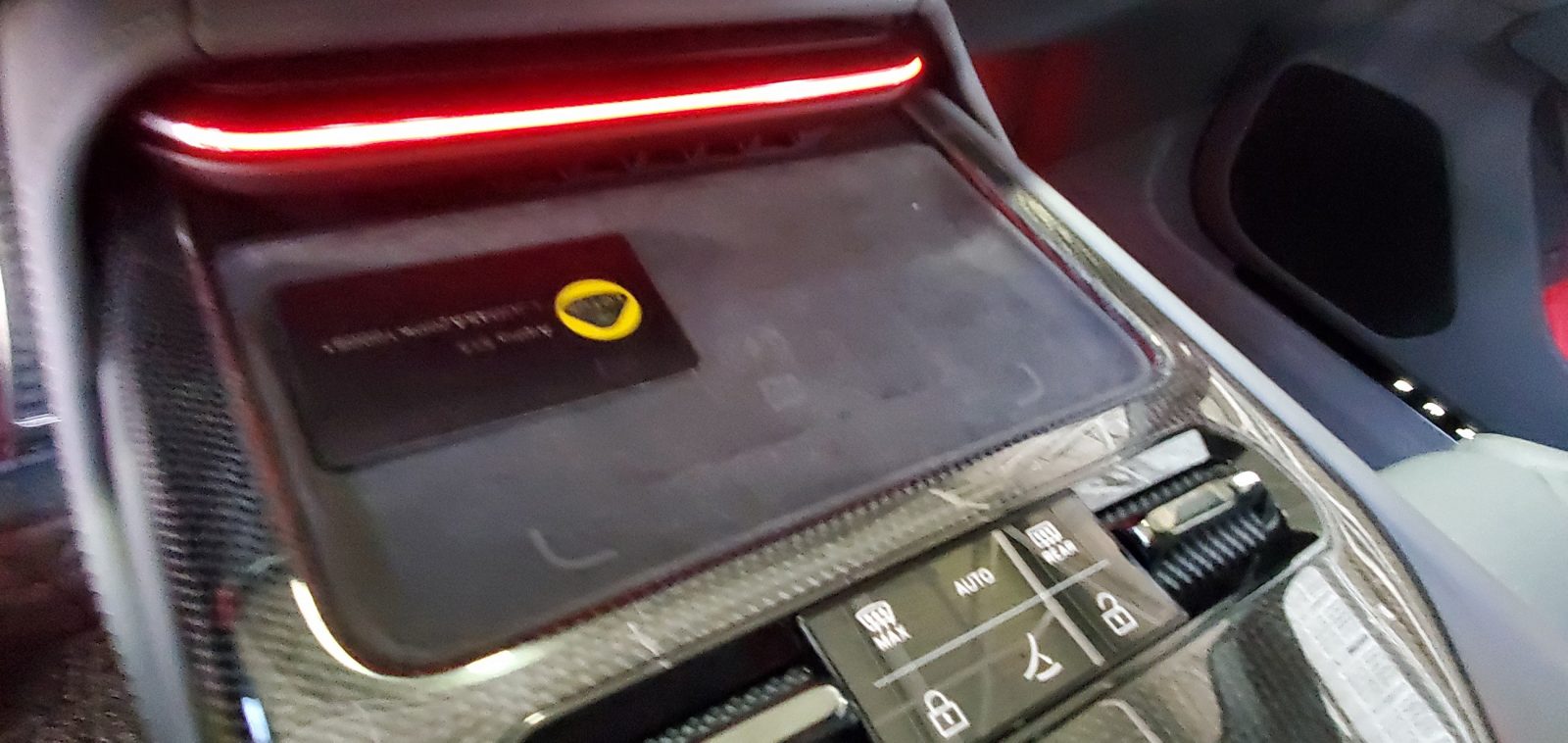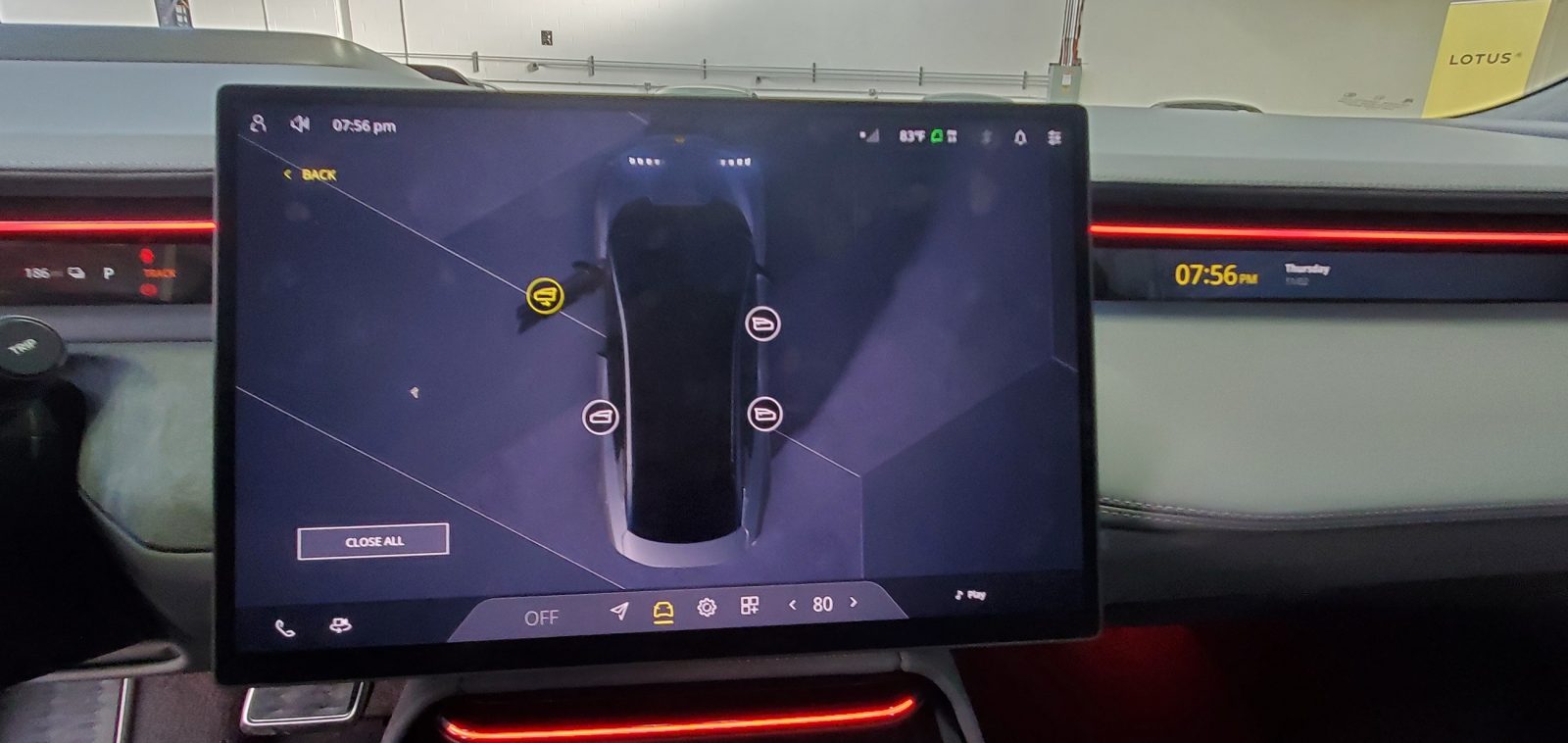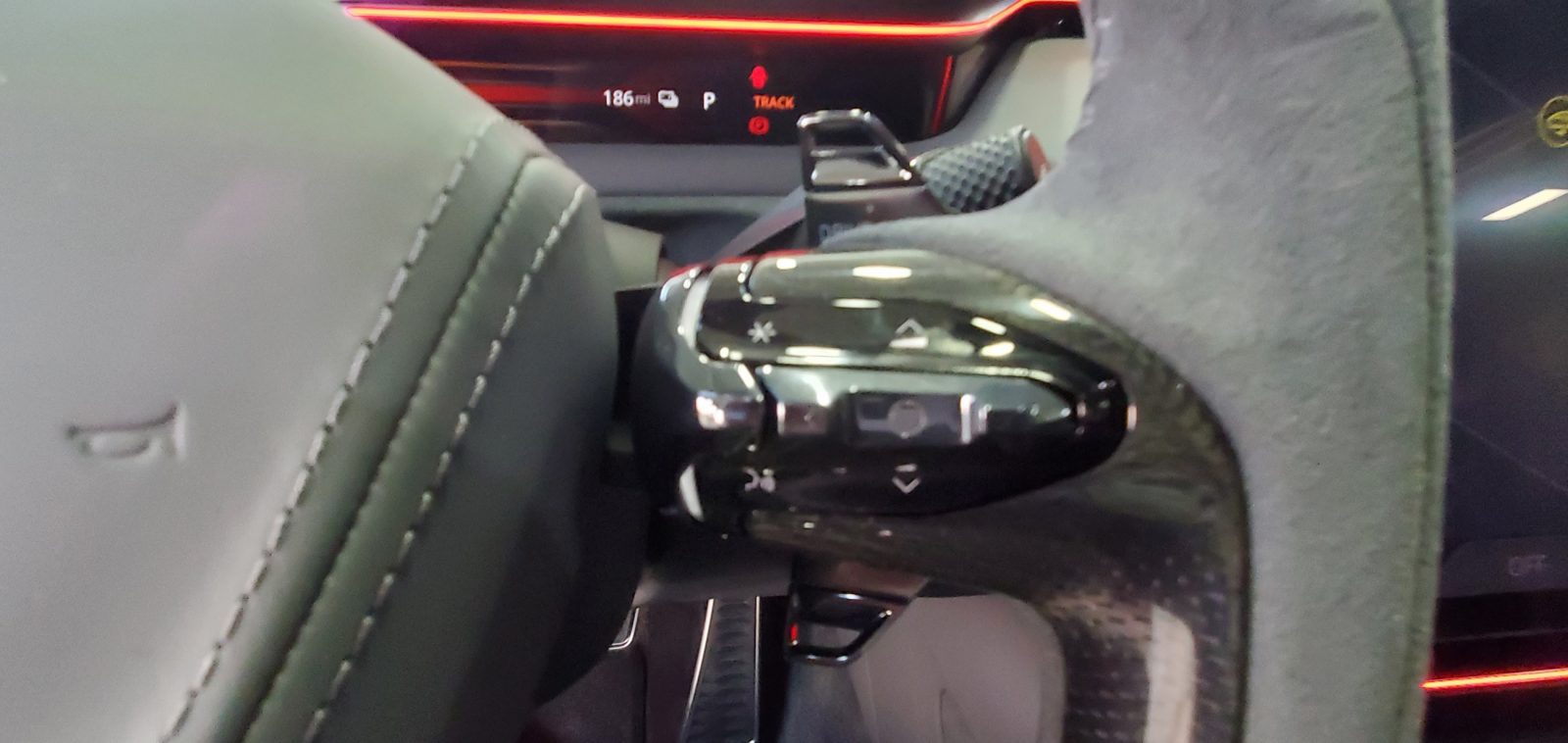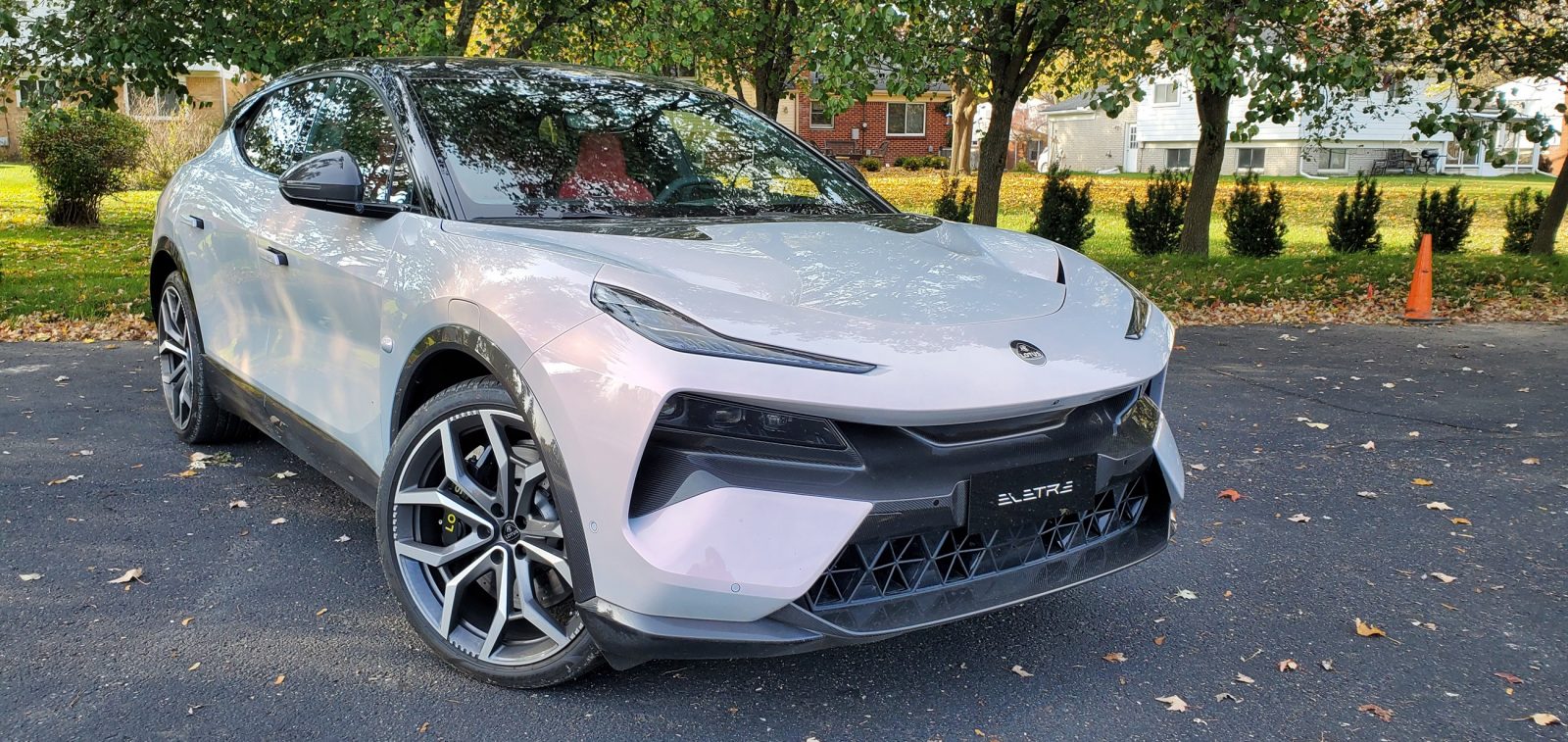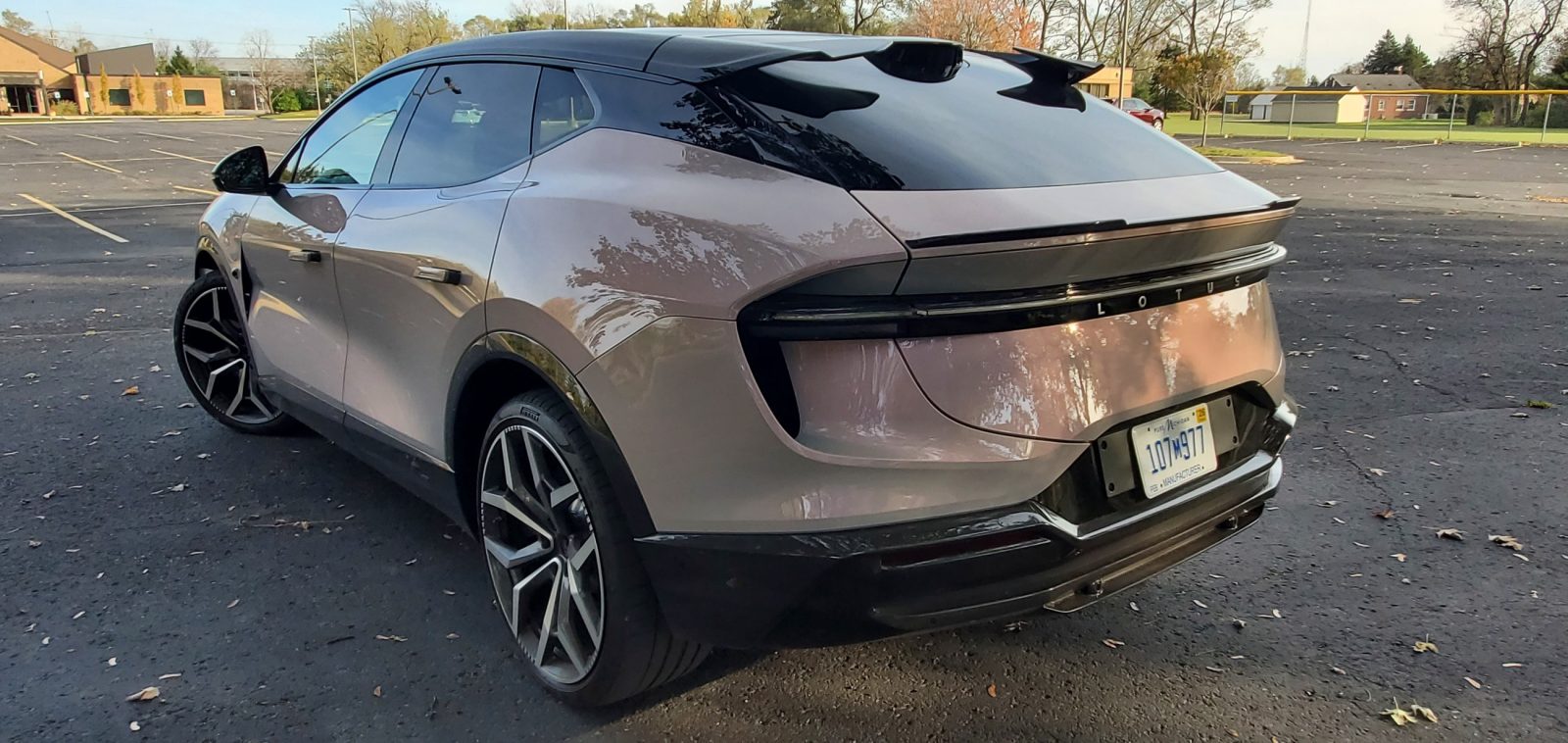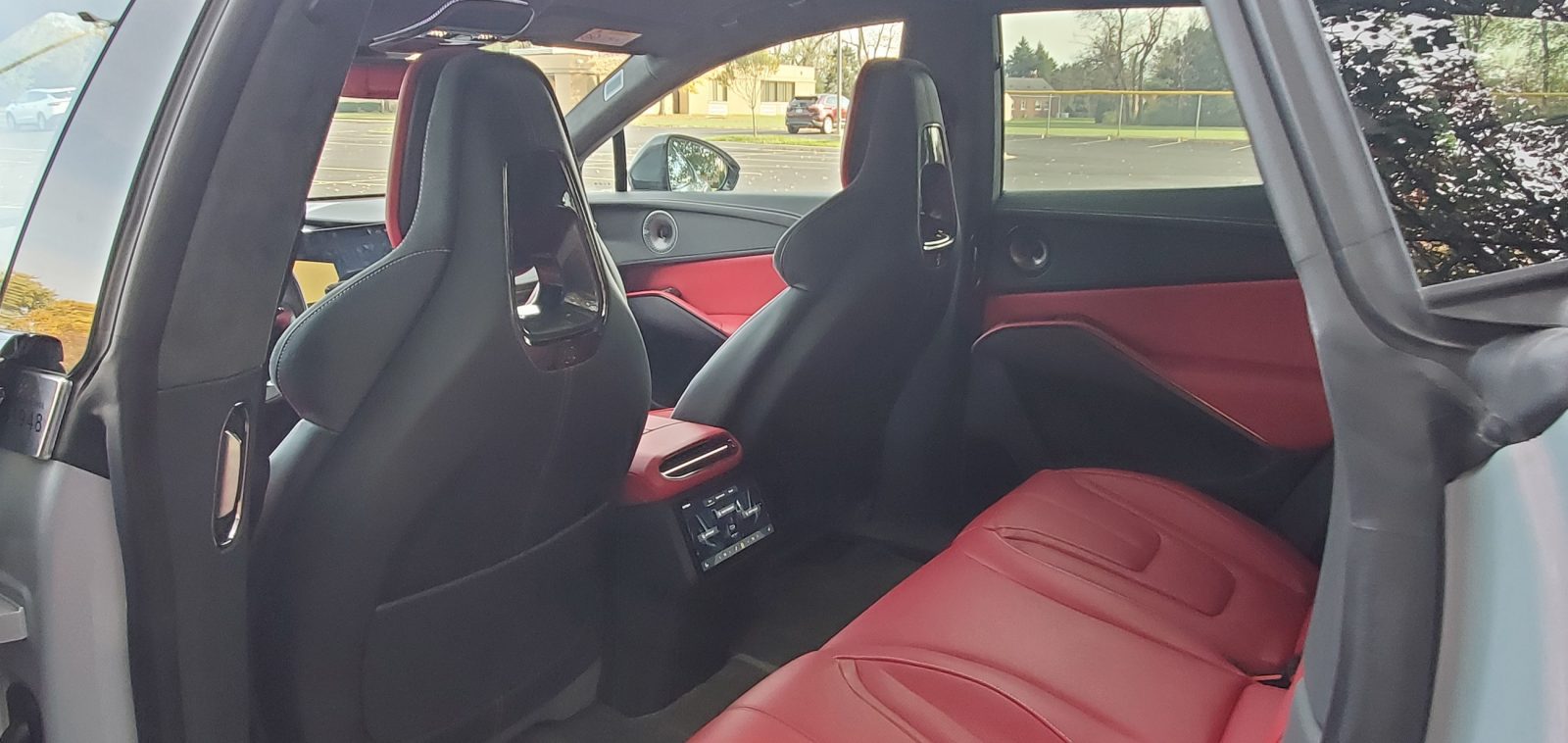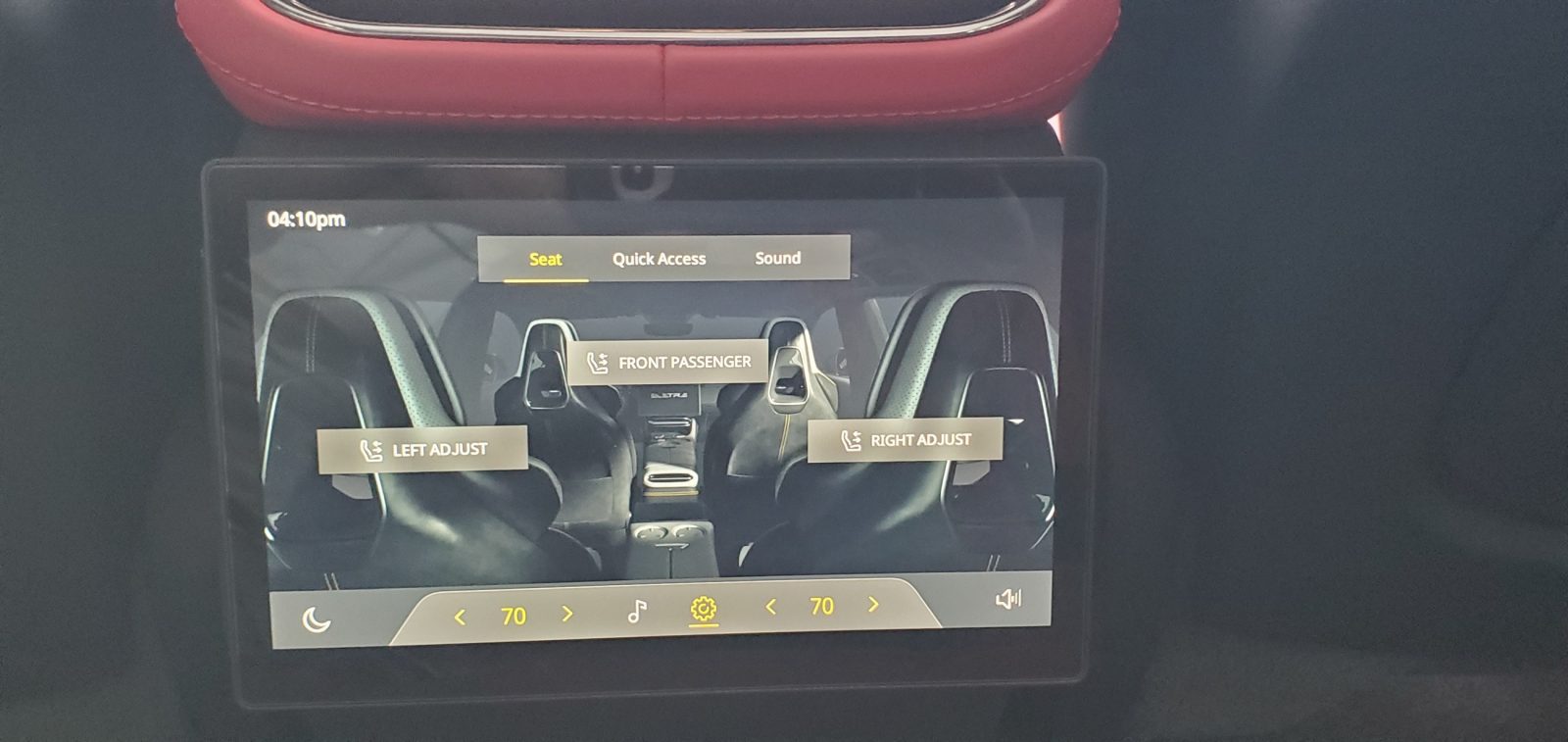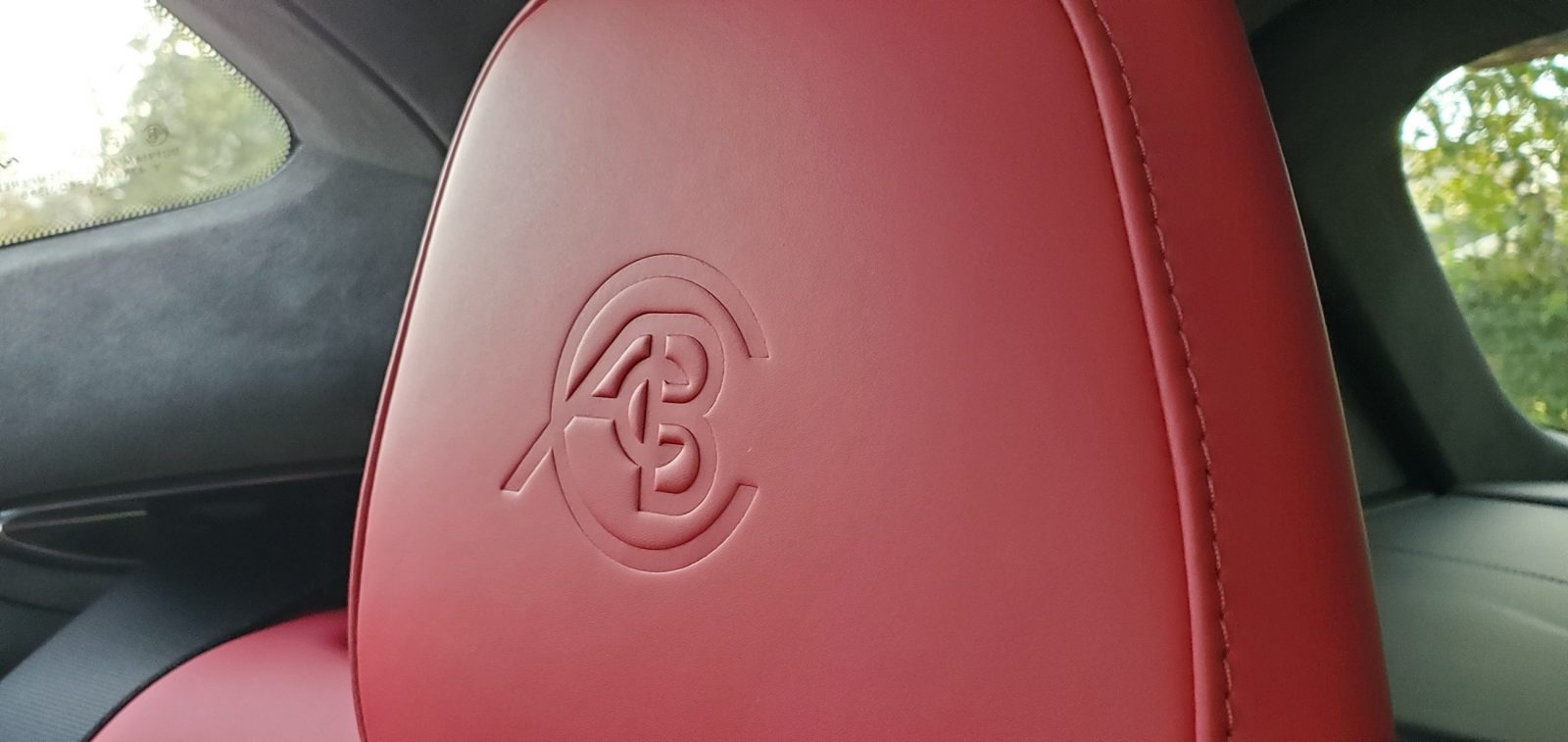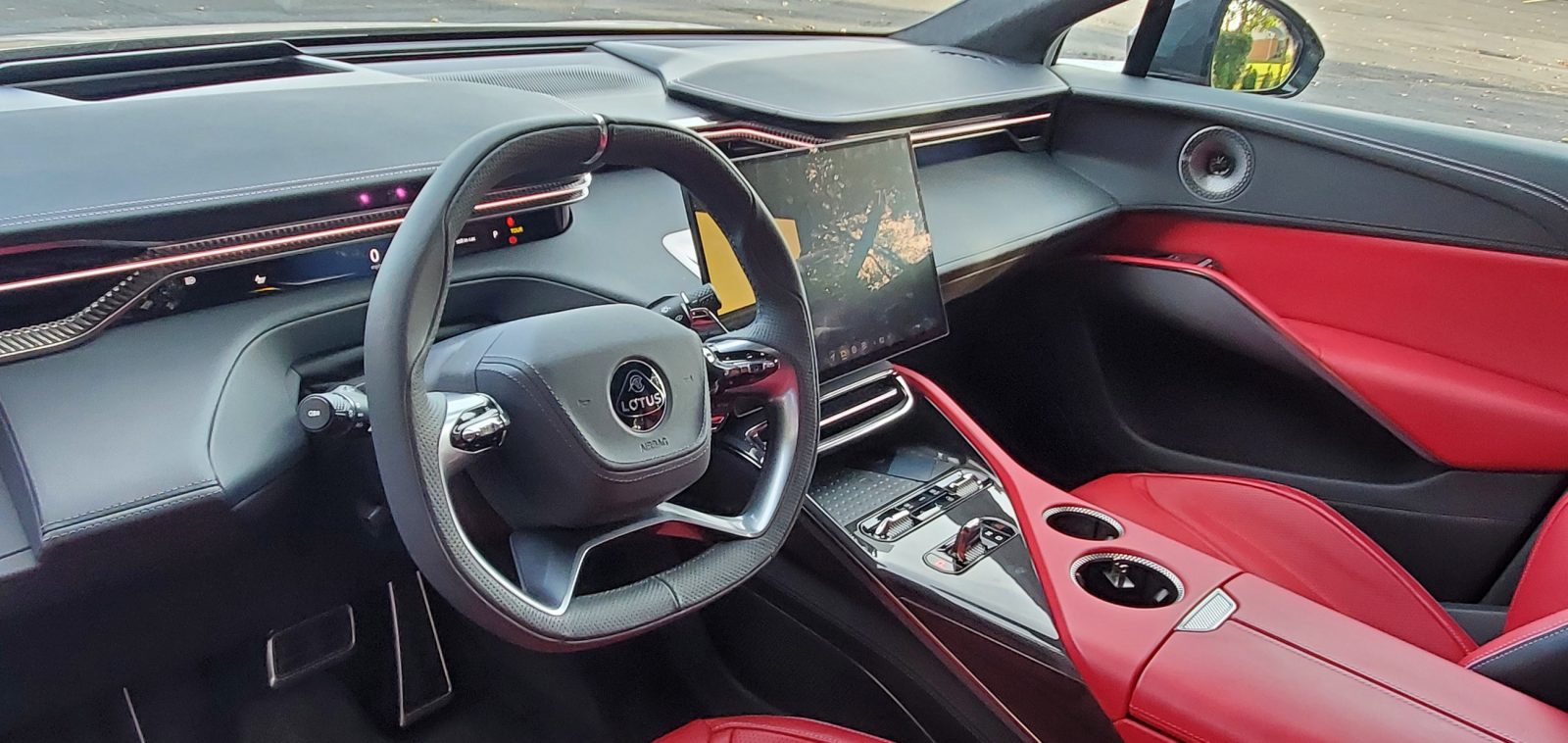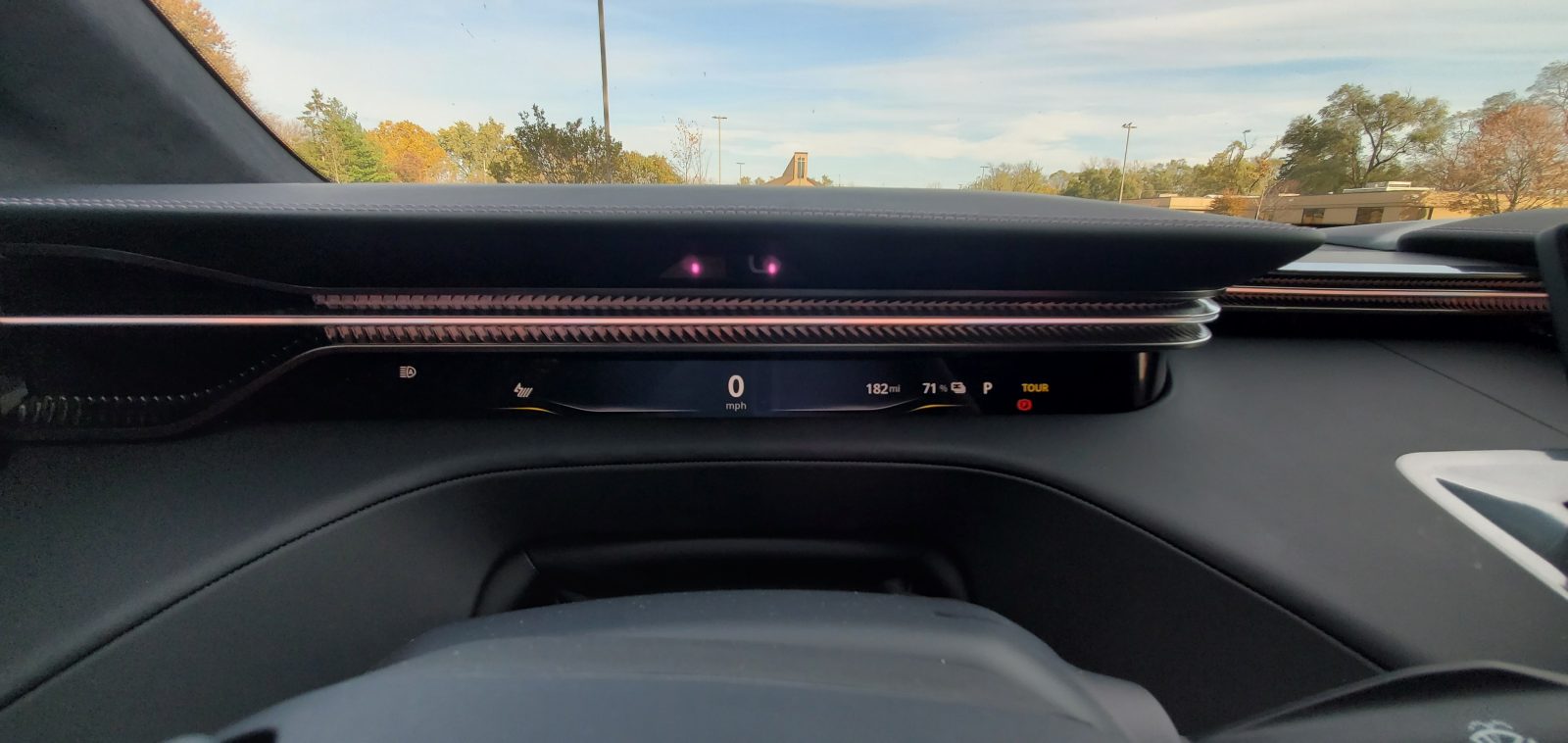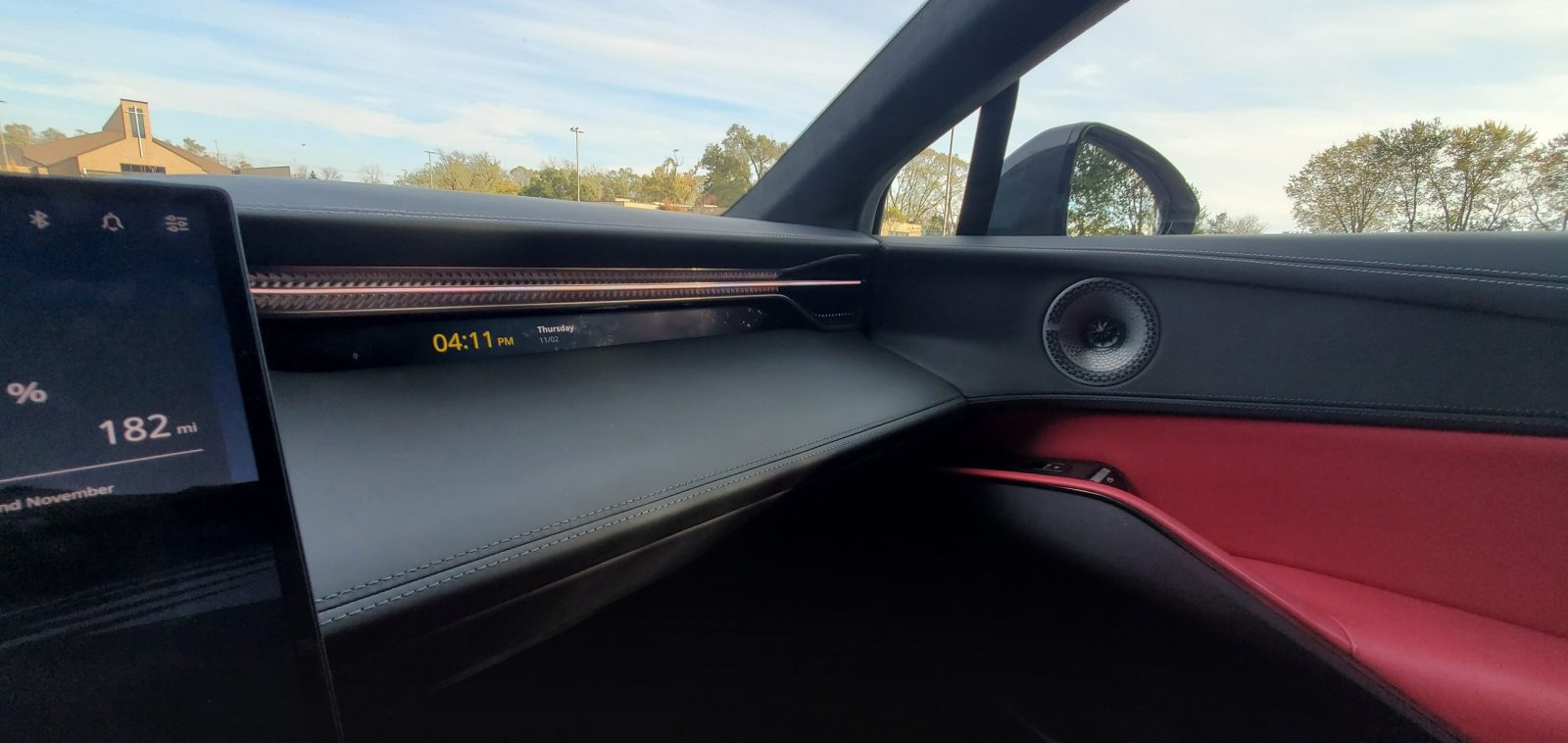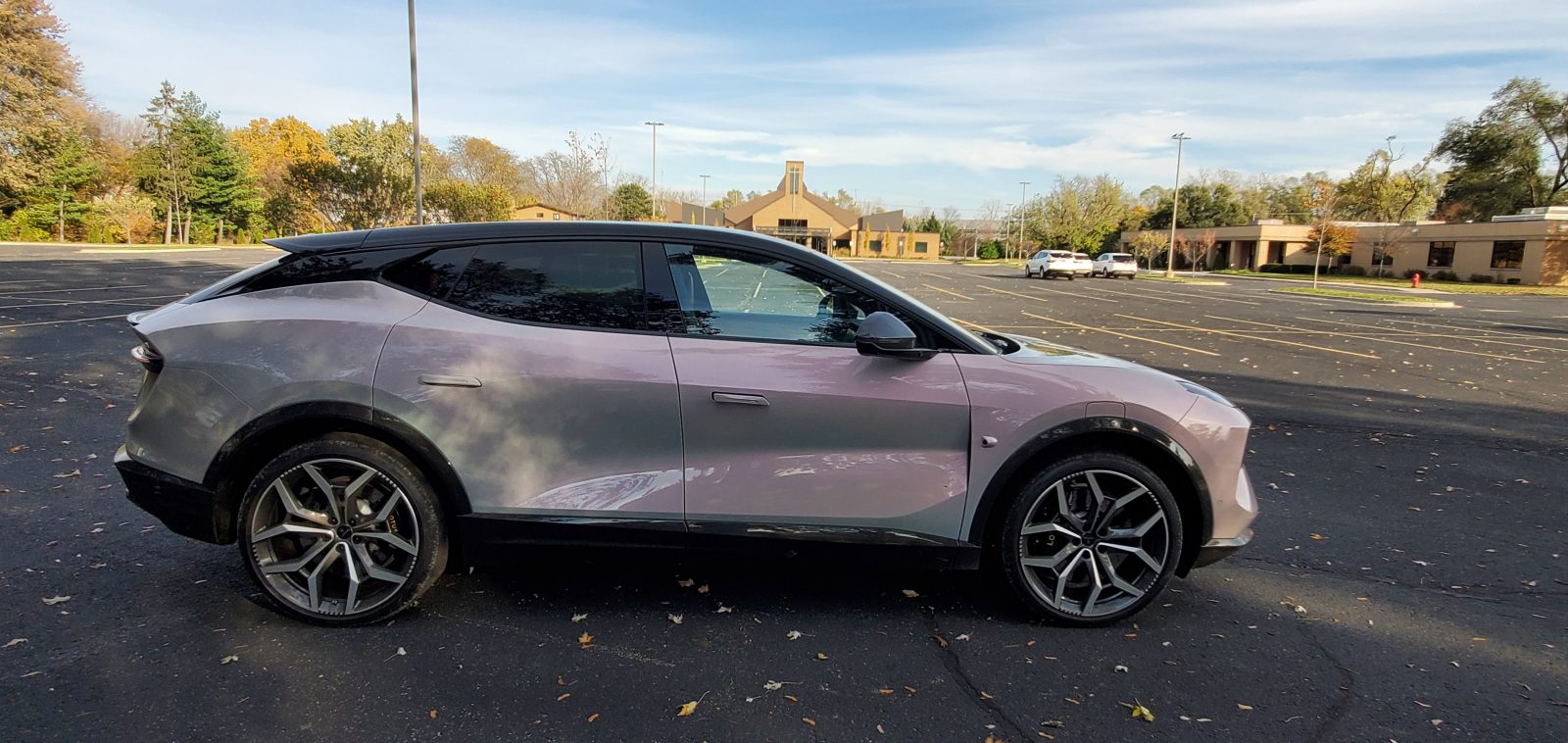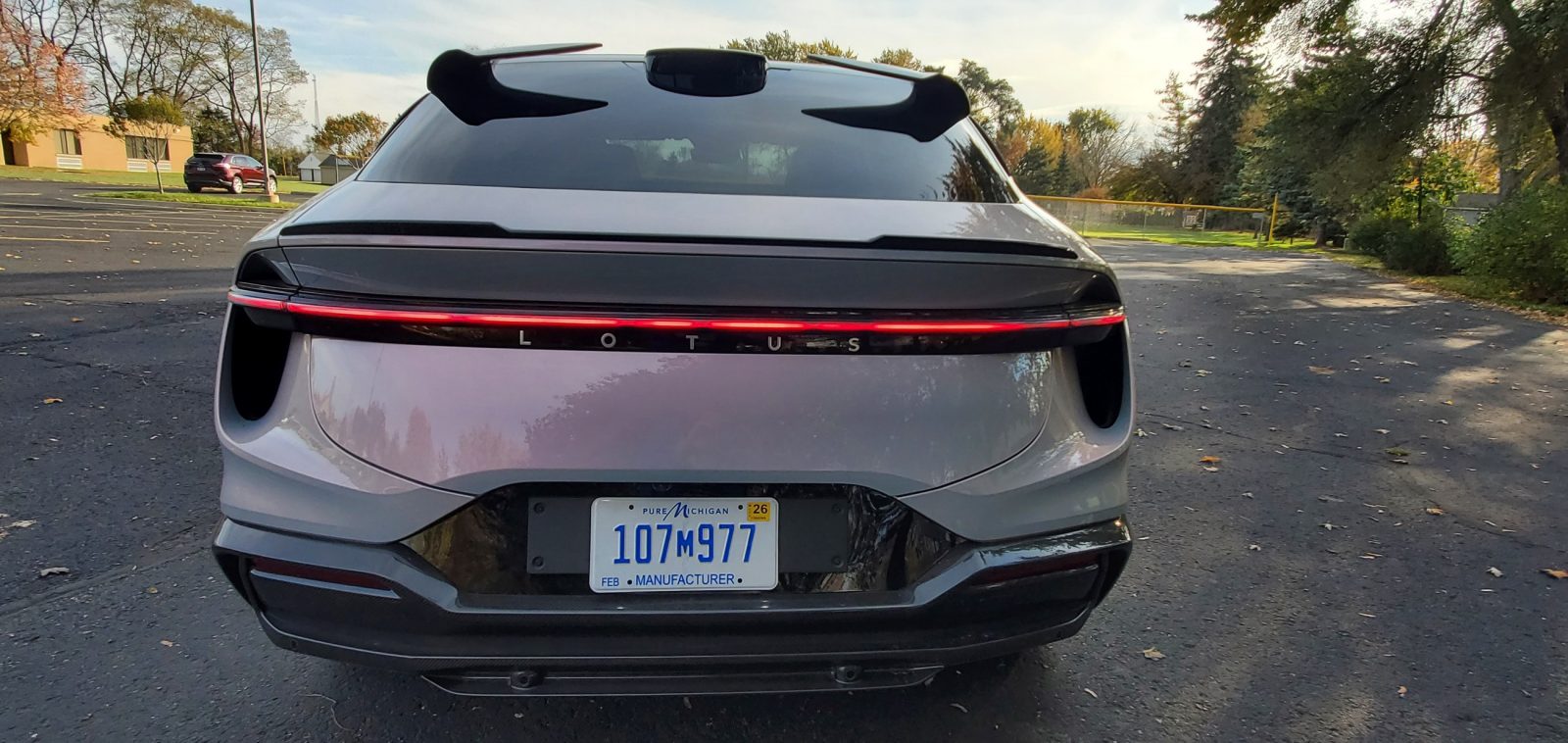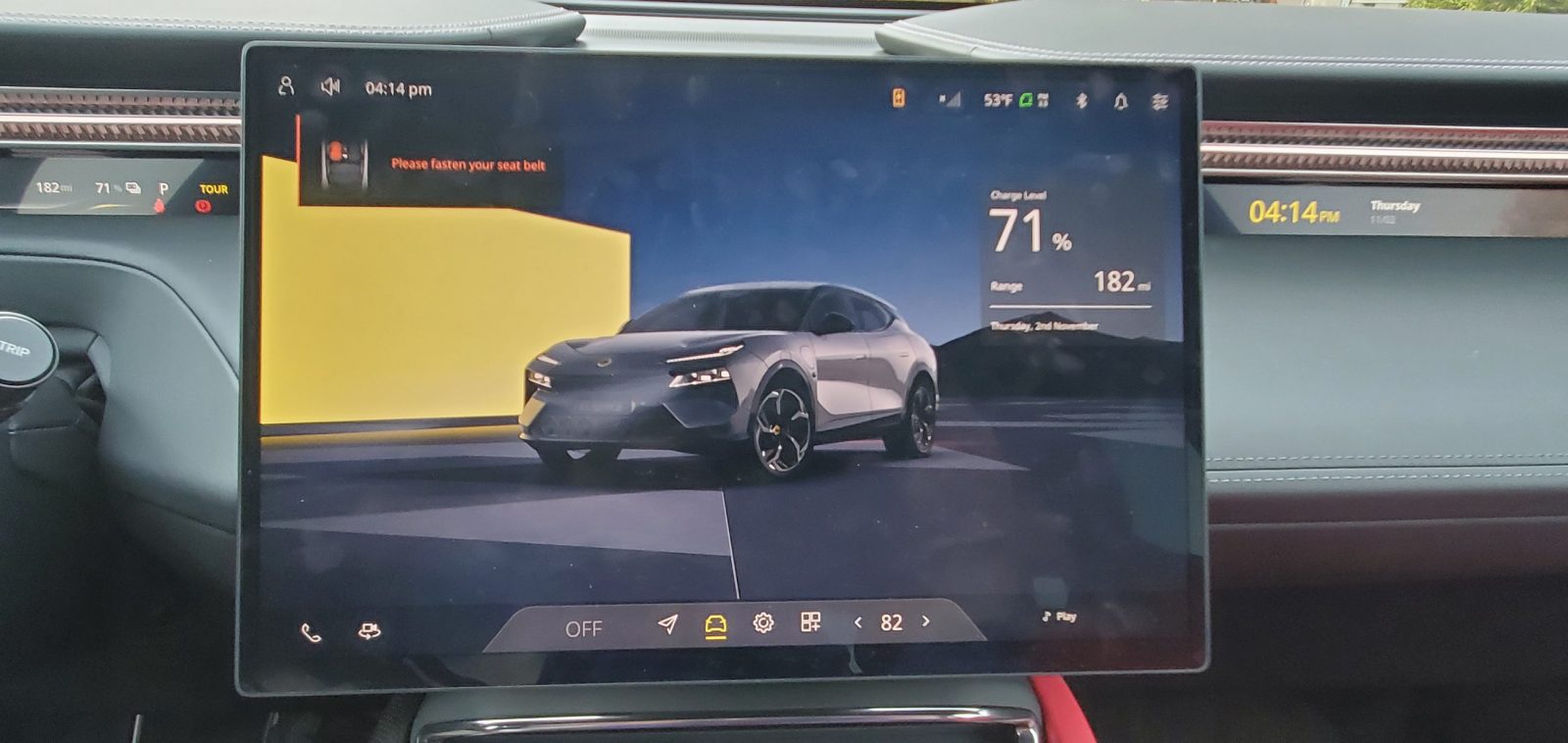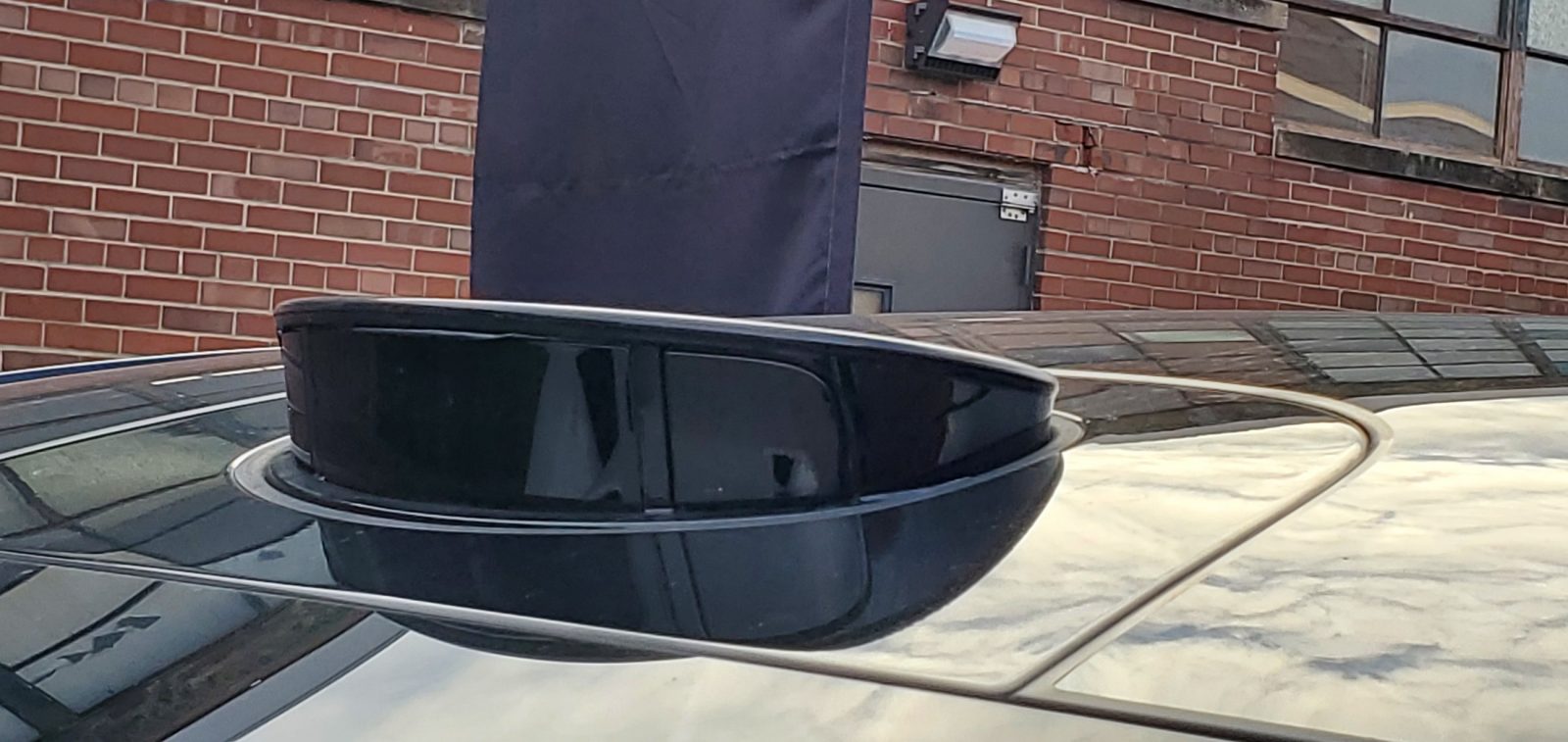Lotus is preparing to make big moves in the EV vehicle segment. While the company cemented its history as an automaker that made lightweight vehicles that emphasized weight-cutting and exceptional handling, Lotus has also been on a proverbial rollercoaster in recent years with COVID-related challenges and a 2017 stock purchase by Chinese firm Geely being some of the twists and turns that have faced Lotus owners the past few decades. That said, Lotus is preparing to embark on a bold strategy and will focus all of its efforts on building a lineup of EV-only offerings with the Lotus Emira being the last ICE model made. But will this gamble succeed, and can the Lotus Emeya and the Lotus Eletre SUV propel Lotus into this new era? We were eager to find out.
Lotus Emeya, A Hyper GT With No Equal?

When we made the drive to Lotus’s offices in Plymouth, Michigan we were introduced to the Lotus Emeya. Lotus says that the Emeya was designed to be a “Hyper GT” and that the model will have”no equal” when it comes to rivals. However, look for the model to indeed have competition with the Emeya being positioned against rivals like the Porsche Taycan and the Audi e-tron GT. The exterior styling shares some core elements with the Eletre SUV including the headlights as well as the core design of the front end.
However, the Emeya’s sedan shape allows the car to have a sleeker appearance and we like the way that Lotus infused numerous geometric shapes into the Emeya’s design in select spots. The side profile was designed to help improve vehicle aerodynamics and it draws the eye towards the functional vents that allow air to flow from one of the Emeya to the other. The rear spoiler and rear diffuser are electronically adjustable and the rear lightbar allows the Emeya to embrace a bold futuristic look. The wheels on the Emeya we spent time with are infused with carbon fiber and we suspect that this is an attempt by Lotus to help shed unwanted weight though the Emeya will still be a pretty heavy EV entry when it makes its way to showrooms.
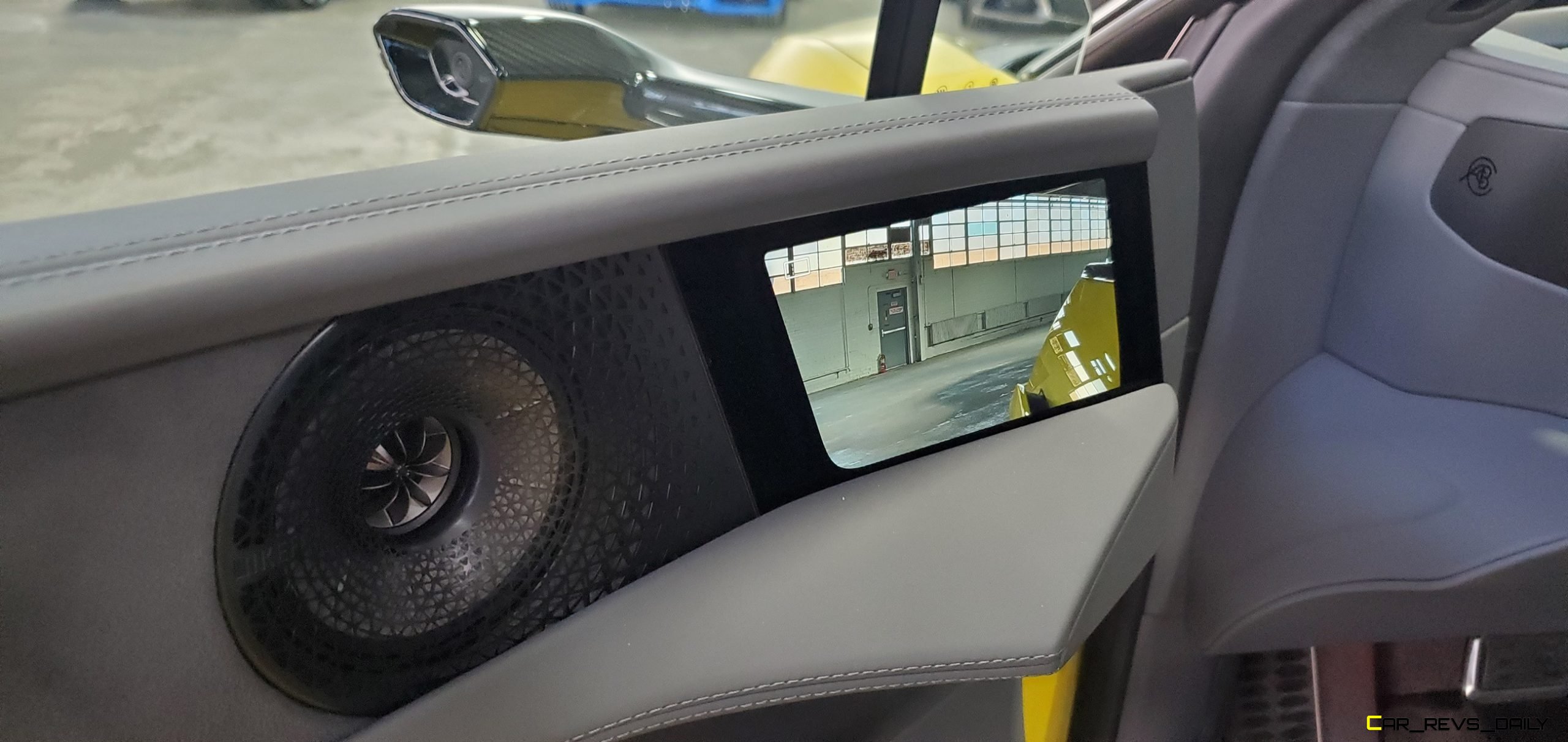
Our example was a late-stage Euro-spec prototype and as a result, it had slick camera mirrors that fed into small displays located in the upper door panels. Unfortunately, the National Highway Traffic Safety Administration (NHTSA) still says that the tech is illegal on U.S. bound models and as a result, the Emeya will arrive in the U.S. with traditional side mirrors. Its biggest party trick however is unaffected by legal red tape, Level 4 Autonomus driving capability. This is achieved by special Lidar and camera components with the fully retractable bits being hidden in the front panels and the roof. Lotus says that Level 4 allows the equipped vehicle to handle a wide range of tasks without human intervention and the firm is ultimately hoping to achieve Level 5 capability which would eliminate the need for any human input.
The interior of the Emeya is a massive step forward for Lotus with the cabin featuring a strong infusion of high-quality materials including Nappa leather accents, faux-suede upholstery, and real aluminum accents. A large 15.1-inch infotainment screen is the central hub where owners can access many of the Emeya’s features and a larger 55.1-inch heads-up display helps project crucial information to the driver’s line of sight. A slim display also runs along the passenger portion of the dashboard but unlike other screens we have seen in this part of the cabin, the Emeya’s will primarily be eye candy. Thankfully there are physical shortcuts to help owners have an easier time navigating around the screen.
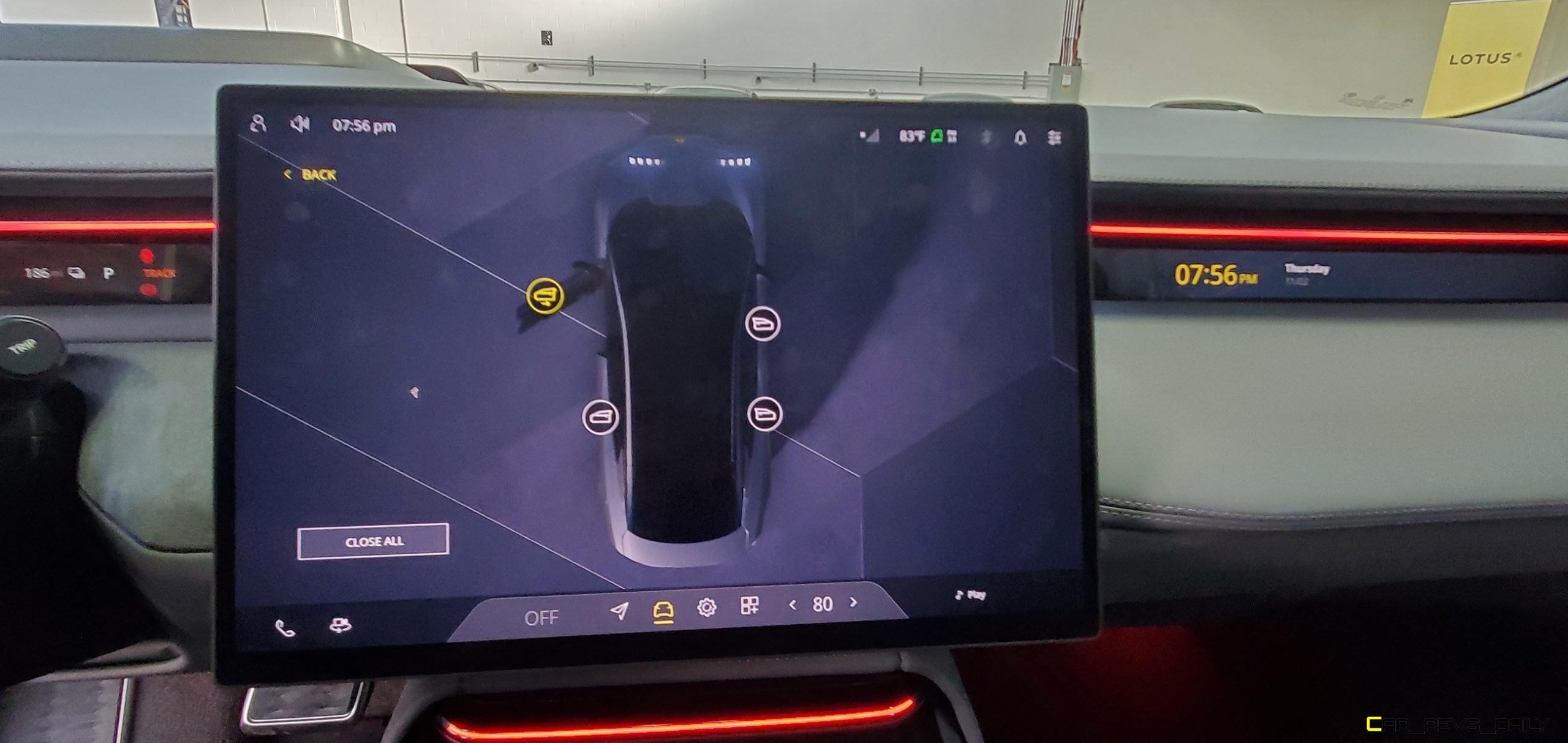
The backseat in our example was a two-passenger setup thanks to the large central tunnel which allowed the cabin to hold four passengers, but Lotus says that buyers can switch it out for a traditional bench that increases capacity to five if they need more space. The seats themselves are reasonably comfortable with good amounts of head and legroom despite the presence of the large glass panel. A smaller central screen on the tunnel allows users to adjust select items and even move the seats up to maximize comfort. The doors can be opened and closed automatically with a light tap of the brake pedal to close them or a tap on the screen to open and close them. Storage is handled by a large trunk and while our example didn’t have a production frunk, Lotus says that will be coming on production models in the future.
Lotus Eletre Breaks New Ground In EV SUV Segment

Meanwhile, the Lotus Eletre SUV is preparing to help Lotus break new ground on two distinct fronts. The Eletre is not only the first SUV that the company has ever produced, but it will also be the first EV SUV on top of that. As a result, it has alot riding on it but Lotus seems confident that the Eletre will grab its own unique slice of the EV SUV sales pie. The exterior styling shares the bulk of its DNA with the Emeya, especially in regards to the headlights, front fascia, and elements of the rear styling all being carried over from the Emeya. However, the Eletre puts these traits on an SUV profile and while there are some angles where the Eletre looks a bit strange, it’s still a bold and very handsome SUV.

The interior also shares plenty of features with the Emeya but traditional mirrors and a soft close system replace some of the more elaborate features in an attempt to cut costs and make the Eletre compliant with U.S. regulations. High-quality materials once again play a prominent role in the Eletre and the 15.1-inch infotainment screen still serves as the control center for many of the Eletre’s features (for better and for worse.) The latter category emerges when you use the climate control which is controlled primarily through the screen and is not a very ideal setup to use when you’re driving (physical shortcut buttons do help resolve this to an extent). Some of the other features are also buried in too many sub-menus but wireless Apple CarPlay and Android Auto help alleviate some of this frustration. The back seats are also very comfortable and they can be folded down to help expand cargo room which is great for hauling groceries and gear. The Kef premium audio system is also used in the Eletre and sound quality was very good but we will reserve final judgment on that until we get my wife inside to take a listen. A large wireless phone charging pad is included but if you choose the optional keycard in lieu of a traditional key fob you will have to have the card in that area to drive the Eletre which can create space issues with certain phones.
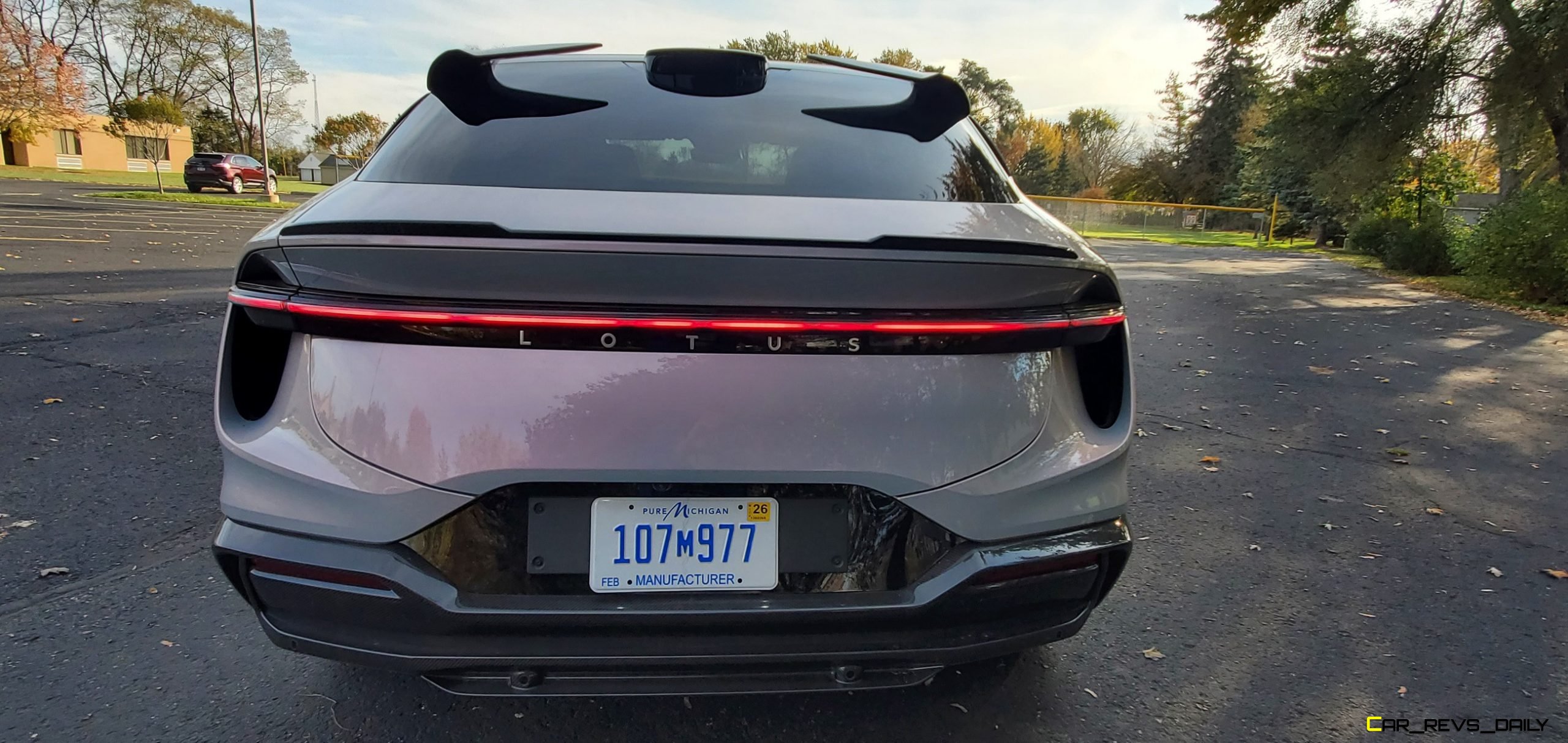
Unlike the Emeya, Lotus allowed us to spend some time on the road with the Eletre and the company even upped the ante by giving us a range-topping R model in Blossom Gray. While the EV powertrain options are shared with the Emeya, our real-world road test with the Eletre was our first glimpse of how the setup performs in the real world. Dual electric motors are standard but while Base and S variants get a slightly tamer 603 hp tune. Our wild R example featured a setup that allowed it to make a combined system output of 905 hp which allowed our flower power-hued tester to make the sprint to 60 mph in a scant 2.7 seconds.
This insane amount of acceleration does cause the R to twitch and squirm for a moment before it gets traction but once it does, the Eletre feels like you’re in the first car of Top Thrill Dragster (before it closed for a revamp) or even a bullet train and easily surges out of stoplights without breaking a sweat, especially in Track mode. However, we preferred to keep things in either Sport or the default base modes partly due to how sensitive the throttle is to inputs in Track Mode. Sport mode provides more balance and also allows drivers to get a better sense of the throttle which helps the electric motors perform at their full potential.

Handling in the Eletre is pretty decent but buyers that might have fond memories of the Exige and the Elise will not find the same go-kart-like character that defined those models. The Eletre is a heavy EV thanks in part to the large 109 kWh battery pack and as a result, there’s still a good deal of body roll and nose dive when the Eletre is pushed to its limits. The aforementioned battery pack also allows the Eletre R to get an estimated 260 miles of range which is rather low. Buyers looking for max range are best served by the Base and S models which can get 315 miles of range between charges. Like the Emeya, Level 4 autonomous driving capability is also included on the Eletre with the SUV using the same suite of sensors.
Value Quotient

Lotus wasn’t ready to discuss key details about the Emeya with the company revealing that it will be unveiling key details (including pricing) in the next few months. In the meantime, information surrounding the Eletre SUV is less vague with Lotus reps revealing in the past that it plans to offer a base Eletre model at an estimated $85,000. That said, look for the majority of Eletre models to be over the $100,000 barrier with R models like our example easily being double that figure.
We were asked by a friend after we returned home about whether the Emeya and the Eletre will be viewed as being worthy of the Lotus badge or not? The answer to that question will ultimately depend on the buyer. Customers with fond memories of past models like the Elise will not find the same magic here, and Lotus says those buyers will be best served by the Lotus Emira sports car. However, we suspect that the duo will find a home with younger buyers especially those that want an EV but don’t want to go to an upstart company or even an established mainstream brand to get into the green vehicle revolution. We look forward to seeing what’s next from Lotus and whether an all-electric gamble will help lead it to a brighter future.

Carl Malek has been an automotive journalist for over 10 years. First starting out as a freelance photographer before making the transition to writing during college, his work has appeared on numerous automotive forums as well as websites such as Autoshopper.com.
Carl is also a big fan of British vehicles with the bulk of his devotion going to the Morgan Motor Company as well as offerings from Lotus, MG, and Caterham. When he is not writing about automobiles, Carl enjoys spending time with his family and friends in the Metro Detroit area, as well as spending time with his adorable pets.




